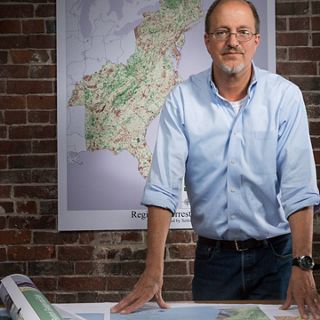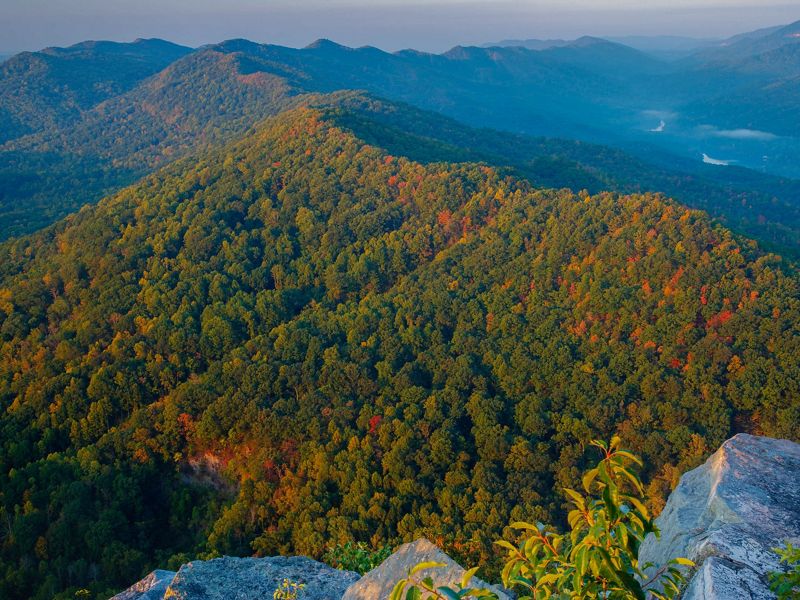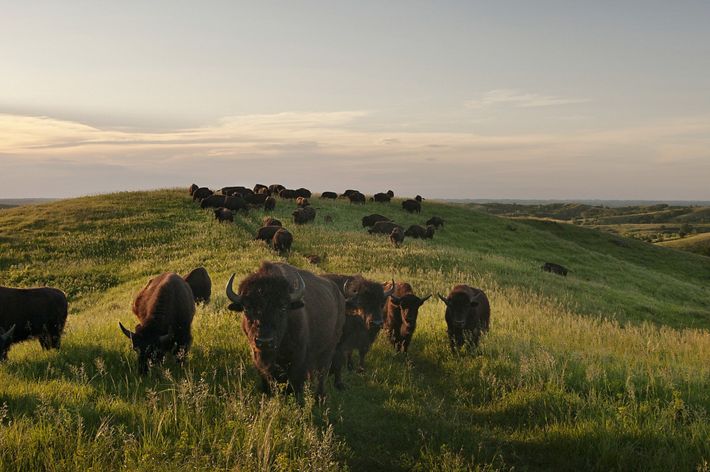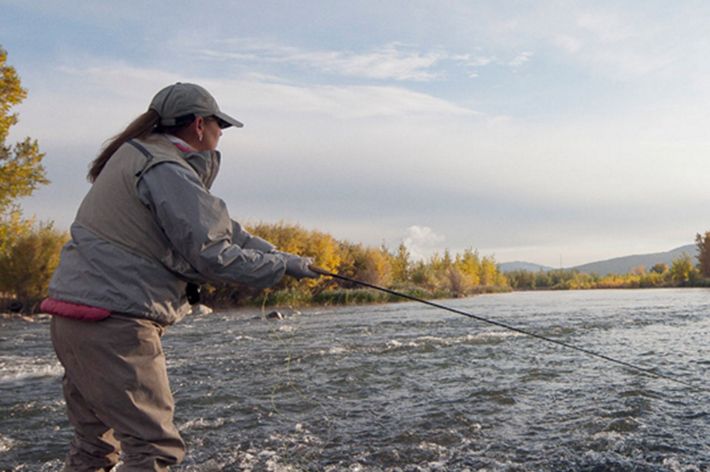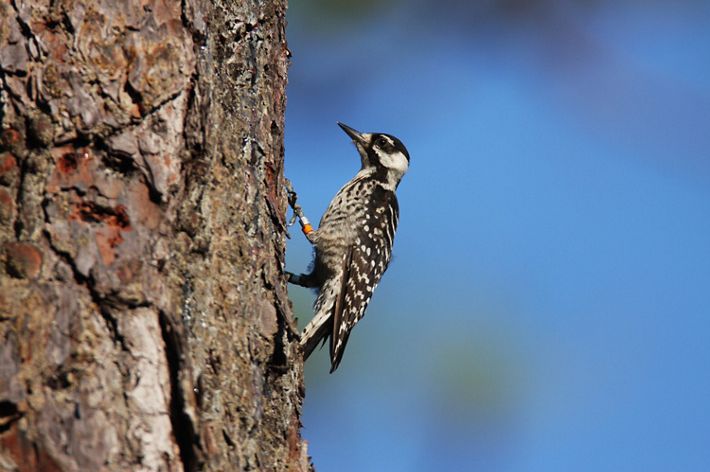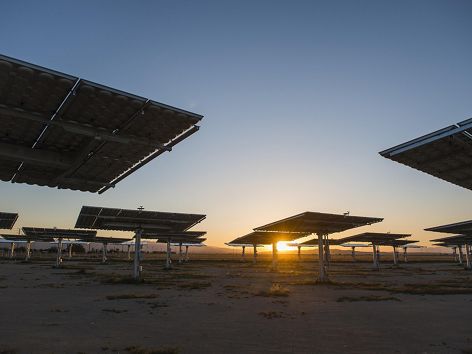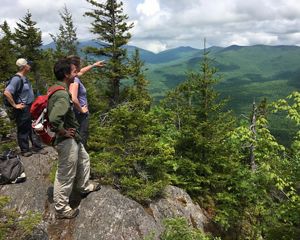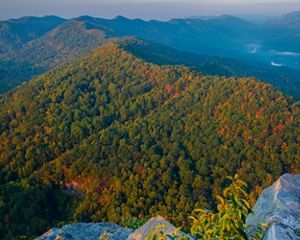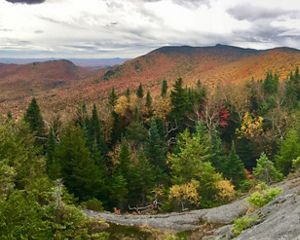
Saving the Future for Biodiversity
Finding and protecting the most climate-resilient places—and the paths species will take to get there.
Update: Science published Feb. 6, 2023 in Proceedings of the National Academy of Sciences: "A resilient and connected network of sites to sustain biodiversity under a changing climate"
> See the Science in PNAS.
Resilient & Connected Network
Protecting climate-resilient natural highways and neighborhoods.
Visit the Resilient Land Mapping ToolThroughout the history of conservation, efforts to save nature have focused on identifying and protecting places with high levels of biodiversity.
Climate change, however, has thrown a large wrench into that strategy.
Nature is on the move like never before. As warmer temperatures, increased flooding and other climate impacts alter and destroy habitat, species are being forced to find new places to live. Diverse plants and animals that thrive in one landscape today may end up living in a very different landscape in the future.
Scientists, in fact, have found that in North America, species are moving an average of 11 miles north and 36 feet higher in elevation each decade to find more hospitable places to live.
Quote: Dr. Mark Anderson
How can conservationists continue to protect biodiversity if the cast of plant and animal species keep moving to escape growing climate impacts? Focus on the future.
So how can conservationists continue to protect biodiversity if the cast of plant and animal species keep moving to escape growing climate impacts?
The answer: Focus on the future.
Some Natural Highways and Neighborhoods
- Berkshire Wildlife Linkage, from VT's Green Mountains to NY's Hudson Highlands.
- Central Idaho, 2.4 million acres of lava beds, high desert, rivers & alpine forests.
- LA's Atchafalaya River Basin, essential habitat for 400-plus species
- Greater Yellowstone ecosystem in MT & WY, source of seven major rivers and forests, sagebrush, grasslands and geothermal wonders.
Sports metaphors may be useful here. In ice hockey or football (soccer), it’s passing to an open space of ice or field where you expect a teammate to go. In conservation, it’s identifying and protecting the most climate-resilient "neighborhoods" for biodiversity — and the “highways” species will take to move between them.
I and more than 150 scientific colleagues inside and outside of The Nature Conservancy have been working to do just that. Our new research maps a network of landscapes across the continental United States with unique topographies, geologies and other characteristics that can help withstand climate impacts.
This roadmap of “natural highways and neighborhoods” shows where plant and animal species have the best chance to move away from growing climate threats and find new places to call home.
Natural Highways and Neighborhoods Set the Stage
Species are tied to the physical properties of landscapes. Elevation, bedrock, soil content and other topographical and geological characteristics play a big role in determining the plants and animals that live there.
Landscapes with many different physical characteristics—steep slopes, tall mountains, deep ravines, diverse soil types—create numerous microclimates that offer plants and animals the opportunity to move around their local “neighborhood” to find suitable habitat where they can escape rising temperatures, increased floods or drought.
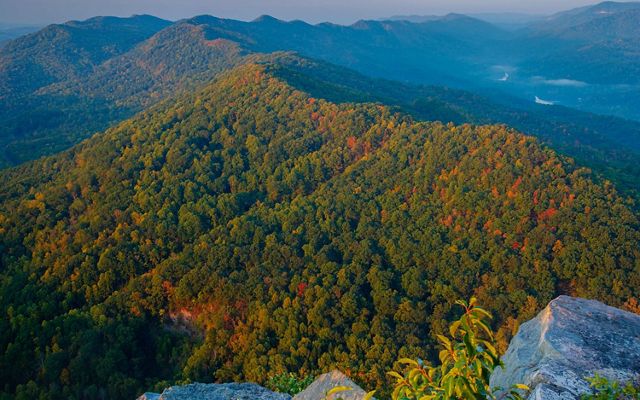
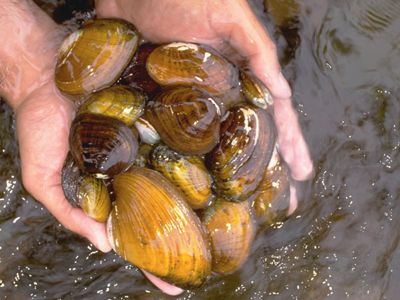
For example, in mountainous landscapes, mountainsides that face the sun throughout the day are hotter and drier than the shadier sides facing away from the sun. As climate change leads to higher temperatures, species have the opportunity to reestablish themselves on the other side of the mountain where temperatures are consistently cooler.
But geological and topological diversity alone are not enough to ensure nature survives. The landscapes also must have good connectivity — “natural highways” that allow movement across local microclimates and between climate resilient sites.
Climate Resilient Lands with Human Benefits
Unfortunately, our research shows that nearly 60 percent of lands and waters in the United States are fragmented by human development, preventing species from moving and finding new, more hospitable habitat.
Areas that have both highly diverse landforms and high connectivity offer nature the greatest chance to thrive in the face of climate change.
And these climate-resilient lands don’t just provide safe places for plant and animal species to thrive— they also provide clean drinking water, economic activity and other vital services human communities rely on for survival.
Climate-resilient lands in the Eastern U.S., for example, contain 75 percent of the region’s sources of drinking water, generate billions in outdoor recreation, sequester 3.9 billion tons of carbon and mitigate 1.3 million tons of pollution—resulting in an estimated $913 million in avoided healthcare costs.
Taking the Roadmap on the Road
The Nature Conservancy is now using this Resilient and Connected Mapping Tool to develop plans that can help nature thrive on a national scale. Recognizing the sovereignty of Indigenous Peoples and the unique ecological and cultural knowledge they steward, we are planning to explore together how the roadmap can best support their conservation goals.
For example, in North Carolina, the roadmap was used by the Sandhills Conservation Partnership – a collaboration between the US Fish and Wildlife Service, the North Carolina Forest Service, Fort Bragg, The Nature Conservancy and others – to expand their area of work to include the Uwharrie Mountains. Many longleaf-associated species such as the red-cockaded woodpecker have disappeared from the Uwharries due to a lack of fire management, but the roadmap identified the area as being highly resilient due to its varying soils and topography. The Partnership decided to expand their conservation work to include the Uwharries to ensure it could provide safe homes to the Sandhills’ wide diversity of species as they migrate away from climate impacts.
We are also sharing the roadmap with solar companies to help them determine the best places to site development without harming these important lands.
A New Way of Thinking About Conservation
Last year, during the annual gathering of the Land Trust Alliance, Alliance President Andrew Bowman called the roadmap a “paradigm shift in how we think about large landscape conservation.” The roadmap could be not only a powerful tool for local, state and national land trusts, Bowman said, but also help achieve the global goal of conserving 30 percent of natural lands by 2030.
Resilient & Connected Landscapes Story Map
See how the Resilient & Connected Landscapes mapping tool identifies sites near you.
Explore the Story MapOur challenge is to accelerate the pace and scale of conservation and conserve a representative network of resilient, connected lands and waters that will allow nature to adapt to climate change.
Climate change is forcing all of us to rethink our strategies to ensure the full diversity of nature —including humanity — will be able to thrive for future generations. This roadmap of natural highways and neighborhoods provides a tool to help us do that. But true success will depend on collaboration.
To achieve conservation at the scale needed, we must collaborate with people and organizations across both the public and private sectors. Conservation success depends not only on landscape diversity and connectivity, but diversity and connectivity across institutions and communities.
Our Goals for 2030
Our planet faces the interconnected crises of rapid climate change and biodiversity loss.
the time for action is nowGlobal Insights
Check out our latest thinking and real-world solutions to some of the most complex challenges facing people and the planet today.

